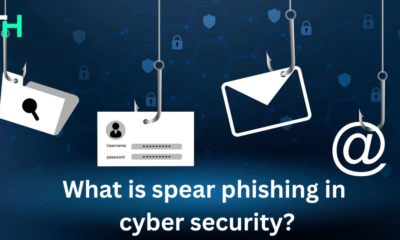Phishing attack
How is my employees getting phishing messages from WhatsApp?

Employees receiving phishing messages on WhatsApp is an increasing threat and commonly results from several factors. There are several ways your employees might be receiving phishing messages on WhatsApp:
Phishing Links: These links, changed as legitimate websites, aim to hack personal information like login credentials, credit card details, or social security numbers.
- How they work: Phishing messages often appear to be from trusted sources (banks, social media, delivery services) and may include urgent requests, offers, or warnings. Clicking the link takes the employee to a fake website that looks identical to the real one.
Impersonation: Scammers may impersonate friends, family, or colleagues to gain trust and request sensitive information or money.
- How they work: They might send messages asking for financial help, claiming to be helpless, or requesting login credentials for a shared account.
Malware and spyware: Malicious software can be delivered through infected links or attachments, allowing scammers to monitor activity, steal data, or even control the device.
- How they work: Once installed, these programs can capture keystrokes, record conversations, and access personal files.
How Employees Are Targeted
- Leaked Contact Information
- Data breaches or leaks from third-party platforms may expose employees’ contact details.
- Lists of phone numbers are often sold or shared on the dark web.
- Social Engineering
- Attackers may guess phone numbers based on common patterns or use other compromised contact lists.
- Phishers often impersonate known entities (e.g., HR departments, vendors) to appear credible.
- Broad-Scale Scanning
- Phishing campaigns often target a wide range of numbers in bulk.
- Automated tools can generate and send messages to multiple phone numbers quickly.
- Weak Account Security
- Employees who reuse passwords or use insecure accounts linked to their WhatsApp may inadvertently expose themselves.
- Compromised devices may allow attackers to access contacts.
- Publicly Available Information
- Employees might list their contact information on public profiles (e.g., LinkedIn and company websites).
- This makes it easy for attackers to target them with customized messages.
Characteristics of WhatsApp Phishing
- Impersonation: Attackers pose as a trusted individual or organization.
- Urgency: Messages often create a sense of urgency to provoke immediate action (e.g., “Your account will be deactivated unless you act now”).
- Malicious Links: Phishing messages contain links leading to fake websites designed to steal credentials or install malware.
- Requests for Sensitive Information: Attackers ask for OTPs, passwords, or financial details.
How to Prevent Phishing Attacks:
- Employee Education: Conduct regular training sessions to educate employees about phishing tactics, warning signs, and safe browsing practices.
- Strong Passwords: Encourage the use of strong, unique passwords for all accounts.
- Two-Factor Authentication (2FA): Implement 2FA wherever possible to add an extra layer of security.
- Regular Software Updates: Ensure all devices and apps are updated with the latest security patches.
- Suspicious Message Reporting: Encourage employees to report any suspicious messages or activities to the IT department.
- WhatsApp Security Features: Utilize WhatsApp’s built-in security features, such as privacy settings and two-step verification.
By implementing these measures, you can significantly reduce the risk of your employees falling victim to WhatsApp phishing attacks.
What Employees Should Do
- Do Not Interact: Avoid clicking links or responding to suspicious messages.
- Block and Report: Use WhatsApp’s built-in feature to report and block such messages.
- Check for Scams: Employees should cross-check messages with their company or a trusted contact.
Proactive education, securing data, and implementing robust communication policies can significantly reduce the risk of phishing via WhatsApp. Would you like help creating a specific guide or security policy for your employees? Then, visit the authentic platform given below:
Read More Blogs:
What is smishing and phishing?
Where do I forward Microsoft phishing emails?
What is the difference between phishing and smashing?
-

 Phishing attack8 months ago
Phishing attack8 months agoWhat is Spear Phishing and How You Can Identify This Scam?
-

 Social engineering attack10 months ago
Social engineering attack10 months agoBaiting Attacks Explained: A Closer Look at Cyber Threat Tactics
-

 Social engineering attack8 months ago
Social engineering attack8 months agoWhat are Social Engineering Attacks – A Complete Guide to Cyberattacks Prevention
-

 Social engineering attack9 months ago
Social engineering attack9 months agoSpear Phishing Attack: A Targeted Cyber Threat
-

 Social engineering attack10 months ago
Social engineering attack10 months agoWhat is spear phishing attack? A detailed guide
-

 Social engineering attack10 months ago
Social engineering attack10 months agoWhat is spear phishing in cyber security?
-

 Phishing attack4 months ago
Phishing attack4 months agoWhy is Phishing Still a Major Cyber Threat? Everything You Need to Know
-

 Phishing attack8 months ago
Phishing attack8 months agoWhat Are Phishing Emails? A guide for you
























